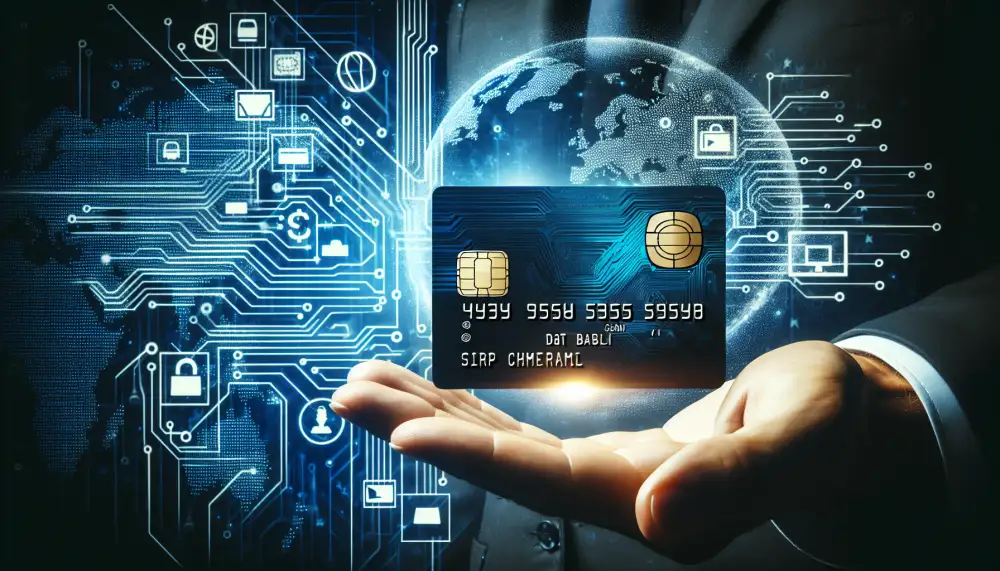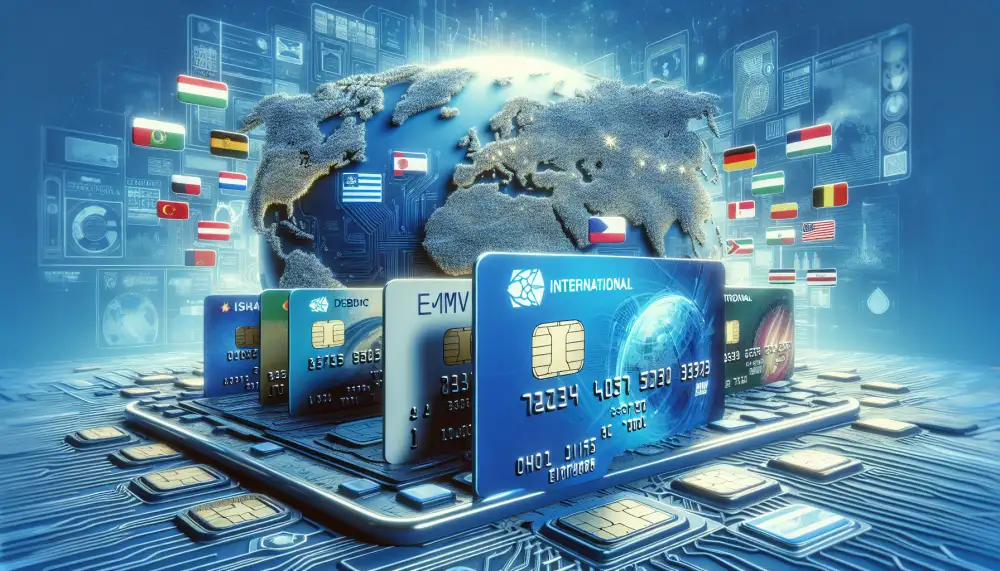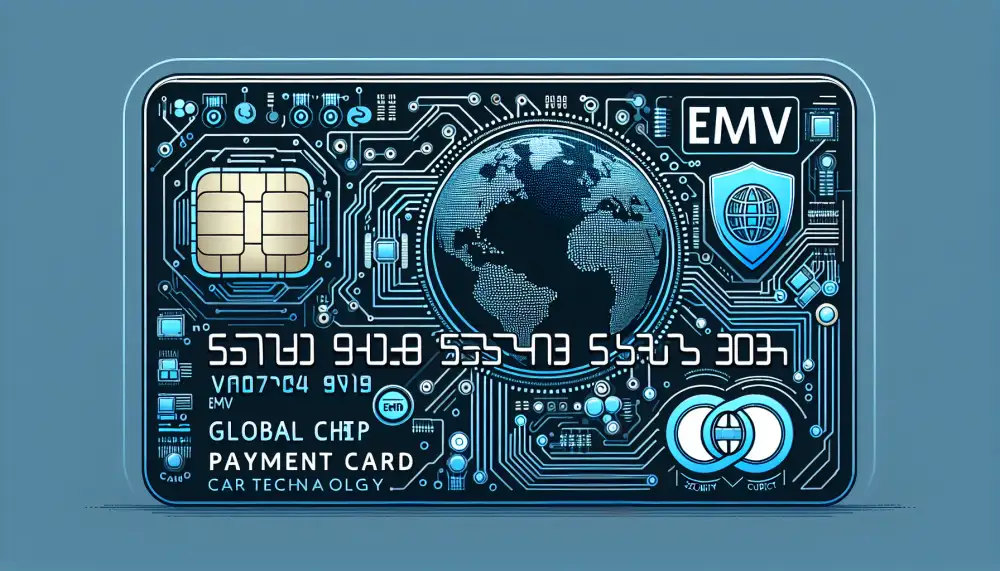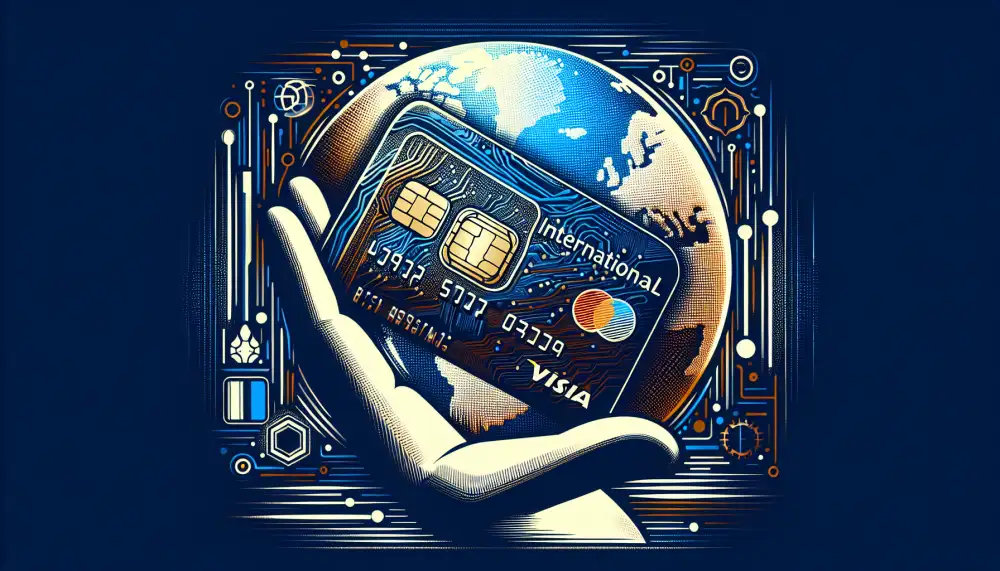International EMV: The Future of Secure Payments

- EMV Explained
- Global Adoption of EMV
- Enhanced Security Features
- Reduced Card-Present Fraud
- Liability Shift for Merchants
- Increased Transaction Security
- Improved Customer Trust
- EMV Compliance Requirements
- Implementation Costs and Challenges
- Future of EMV Technology
- Contactless Payments and Mobile Wallets
- EMV's Impact on Global Commerce
EMV Explained
EMV stands for Europay, Mastercard, and Visa — the three companies that originally created the standard. It’s also known as “chip and PIN” or “chip and signature.” EMV is a global standard for credit and debit payment cards based on chip card technology. It’s a more secure way to pay than using a magnetic stripe card. EMV cards have an embedded microchip that stores your account information in a more secure way than a magnetic stripe. When you use an EMV card at a point-of-sale (POS) terminal, the chip generates a unique transaction code that cannot be used again. This makes it much more difficult for fraudsters to steal your card information. If you try to use an EMV card at a POS terminal that is not EMV-enabled, the transaction will either be declined or it will be processed as a magnetic stripe transaction. This means that your card information will not be protected by the EMV chip. Most merchants worldwide have upgraded their POS terminals to accept EMV cards.
Global Adoption of EMV
EMV, which stands for Europay, Mastercard, and Visa, has become the global standard for credit and debit payment cards based on chip card technology. This technology is designed to reduce fraud and enhance security in card-present transactions. Unlike traditional magnetic stripe cards, EMV cards store payment data on an embedded microchip, making it extremely difficult for criminals to counterfeit.
The adoption of EMV technology has been a global phenomenon, with countries around the world transitioning from magnetic stripe cards to chip-based cards. This shift has been driven by several factors, including the increasing prevalence of card fraud, the need for enhanced security measures, and the desire to align with international payment standards.
Europe was an early adopter of EMV technology, with many countries implementing it in the early 2000s. The United States, however, lagged behind other developed nations in adopting EMV, only making the transition in 2015. Since then, EMV adoption in the US has been significant, with the majority of merchants and consumers now using chip-enabled cards.
The global adoption of EMV has had a positive impact on payment security, leading to a decrease in counterfeit card fraud in many countries. However, it is important to note that EMV is not a foolproof solution. Criminals have shifted their focus to other types of fraud, such as card-not-present fraud, which occurs in online or over-the-phone transactions where the physical card is not present.
Enhanced Security Features
EMV technology significantly enhances security features compared to traditional magnetic stripe cards. EMV chip cards store data on an embedded microchip, making it extremely difficult for criminals to duplicate or counterfeit. Unlike magnetic stripe cards that store static data, EMV cards generate a unique transaction code for every purchase. This dynamic code, known as a cryptogram, makes it virtually impossible for fraudsters to reuse stolen card information for unauthorized transactions. Even if a criminal intercepts the transaction data, it becomes useless for future fraudulent activities.

| Feature | International EMV (Chip & PIN/Signature) | Magnetic Stripe Cards |
|---|---|---|
| Security | High: Embedded microchip encrypts data, making it difficult to clone. | Low: Data stored on magnetic stripe is easily stolen and replicated. |
| Fraud Prevention | Significantly reduces counterfeit card fraud. | Susceptible to various types of fraud. |
| Global Acceptance | Widely accepted in most countries. | Becoming less common internationally. |
| Liability Shift | Generally shifts liability for fraudulent transactions to the card issuer. | Merchants may be held liable for fraudulent transactions. |
The microchip in EMV cards is equipped with robust encryption and authentication capabilities. When a card is inserted into an EMV-compatible terminal, the chip and the terminal communicate securely to verify the card's legitimacy and the cardholder's identity. This process involves complex cryptographic algorithms that are practically impossible to break with current technology. The use of encryption and authentication protocols ensures that the cardholder's sensitive information remains protected throughout the transaction process.
Reduced Card-Present Fraud
One of the most significant benefits of EMV technology is its ability to reduce card-present fraud. Unlike traditional magnetic stripe cards, which store static payment information that can be easily copied, EMV chip cards generate a unique transaction code for each purchase. This code, called a cryptogram, is virtually impossible for fraudsters to replicate, making it extremely difficult to create counterfeit cards or conduct fraudulent transactions at EMV-enabled terminals.
The chip in EMV cards encrypts the transaction data, adding an extra layer of security. When a chip card is inserted into an EMV-compatible terminal, the chip and the terminal communicate to verify the card's authenticity and generate the unique transaction code. This dynamic process makes it significantly more challenging for fraudsters to intercept and use stolen card information.
The widespread adoption of EMV technology has led to a significant decline in card-present fraud in many countries. Merchants who have not yet upgraded to EMV-compatible terminals may face increased liability for fraudulent transactions, further incentivizing the global shift towards this more secure payment technology.

Liability Shift for Merchants
With the global adoption of EMV (Europay, Mastercard, and Visa) technology, a significant shift in liability for fraudulent transactions has taken place. This shift, often referred to as "liability shift" or "EMV liability shift," has placed the onus of fraudulent transactions on the party that has not adopted the more secure EMV technology.
Before EMV became the global standard, the liability for fraudulent transactions typically fell on the card issuer. However, with the introduction of EMV and its enhanced security features, the liability shifted to merchants who had not yet adopted the technology. This means that if a fraudulent transaction occurs at a merchant's point of sale and they have not implemented EMV-compliant terminals, they become liable for the costs associated with the fraudulent activity.
This liability shift incentivizes merchants to upgrade their payment infrastructure and adopt EMV technology. By doing so, they can protect themselves from the financial repercussions of fraudulent transactions. The liability shift has been a significant driver in the global adoption of EMV, leading to a substantial decrease in counterfeit card fraud.
However, it's important to note that EMV liability shift primarily addresses counterfeit card fraud, which involves the use of fake cards created using stolen card data. It does not entirely eliminate all types of fraud. Card-not-present transactions, where the physical card is not present, such as online or over-the-phone transactions, are still susceptible to fraud.
In conclusion, the EMV liability shift has been a crucial factor in the widespread adoption of EMV technology, leading to a decline in counterfeit card fraud. By shifting the liability to parties that have not adopted the more secure technology, it encourages businesses to prioritize security and protect themselves and their customers from financial losses.
Increased Transaction Security
EMV technology significantly enhances transaction security by replacing the outdated magnetic stripe with an embedded microchip. This chip encrypts transaction data, making it virtually impossible for fraudsters to steal and use your card information. Unlike magnetic stripes, which store static data that can be easily copied, EMV chips generate a unique transaction code for each purchase. This dynamic code becomes useless if intercepted, preventing unauthorized use even if your card details are compromised. This advanced security feature significantly reduces the risk of counterfeit card fraud, protecting both consumers and businesses from financial losses. By adopting EMV technology, countries worldwide have witnessed a substantial decline in fraudulent activities, making it a global standard for secure payment transactions.

Improved Customer Trust
The EMV standard, a global initiative for secure card transactions, has significantly improved customer trust in payment systems. The shift from magnetic stripe cards to chip-enabled EMV cards has made it substantially more difficult for fraudsters to create counterfeit cards. EMV technology generates unique transaction codes for each purchase, making it nearly impossible to use stolen card data for fraudulent activities. This enhanced security measure provides customers with peace of mind, knowing that their financial information is better protected against unauthorized use. The widespread adoption of EMV technology has fostered greater confidence in electronic payments, encouraging customers to embrace card transactions both domestically and internationally. This increased trust translates into a more secure and reliable payment ecosystem, benefiting both consumers and businesses alike.
EMV Compliance Requirements
EMV compliance is a global standard for credit and debit payment cards based on chip card technology. It aims to reduce fraud and enhance the security of card transactions. EMV stands for Europay, Mastercard, and Visa, the three companies that initially developed the standard.
To accept EMV chip cards, merchants must use EMV-compliant point-of-sale (POS) terminals and software. These terminals use a process called "chip-and-PIN" or "chip-and-signature" for authentication. Instead of swiping the card, the customer inserts or taps their chip card on the terminal, which reads the chip's data and verifies its authenticity.
EMV compliance requirements vary depending on the card networks (e.g., Visa, Mastercard, American Express) and regional regulations. However, some common requirements include:
EMV-compliant POS terminals and software
Regular software updates to maintain security
Employee training on EMV procedures and fraud prevention
Compliance with Payment Card Industry Data Security Standard (PCI DSS) requirements
Benefits of EMV compliance include:
Reduced risk of counterfeit card fraud
Improved security for cardholders and merchants
Reduced chargebacks for fraudulent transactions
Enhanced customer trust and confidence
Merchants who fail to comply with EMV standards may face financial liability for fraudulent transactions. They may also experience reputational damage and loss of customer trust.
In conclusion, EMV compliance is crucial for businesses that accept credit and debit card payments. By adopting EMV technology and adhering to the requirements, merchants can protect themselves and their customers from fraud while ensuring secure and reliable payment processing.

Implementation Costs and Challenges
The global transition to EMV has required substantial financial investments from all stakeholders, including financial institutions, merchants, and payment processors. The costs encompass hardware upgrades, software development, testing, certification, and staff training. The shift from magnetic stripe readers to EMV-compatible point-of-sale (POS) terminals represents a significant expense for merchants, especially small businesses. Moreover, the complexity of EMV implementation, including the need for technical expertise and coordination among multiple parties, can pose challenges. Interoperability issues between different EMV systems and payment networks can lead to transaction failures and customer frustration. Furthermore, the ongoing maintenance and security updates for EMV infrastructure require continuous investment. Despite the initial costs and implementation hurdles, the long-term benefits of EMV in reducing fraud and enhancing payment security are widely acknowledged.
Future of EMV Technology
The future of EMV technology is bright, with ongoing innovation and adaptation to the evolving payments landscape. Here are key trends shaping the future of EMV:
Contactless Payments and Mobile Wallets: Contactless EMV payments, powered by near-field communication (NFC) technology, are gaining momentum globally. These transactions offer convenience and speed, as users can simply tap their card or smartphone on a compatible terminal to pay. Mobile wallets, like Apple Pay and Google Pay, leverage EMV technology to enable secure contactless payments using smartphones and other devices.
Biometric Authentication: Integrating biometric authentication, such as fingerprint scanning or facial recognition, with EMV cards and mobile wallets enhances security and prevents unauthorized transactions. By linking a user's unique biometric data to their payment credentials, the risk of fraud is significantly reduced.
Tokenization: Tokenization replaces sensitive card data, such as the 16-digit card number, with a unique, randomly generated token. This token is useless to fraudsters if stolen, as it is not linked to the actual card information. EMV technology supports tokenization, adding an extra layer of security to transactions.
Quantum Computing and Security Enhancements: As quantum computing advances, there are concerns about its potential to crack current encryption methods. The EMV industry is actively researching and developing quantum-resistant cryptographic algorithms to ensure the long-term security of EMV technology.
Internet of Things (IoT) Payments: The proliferation of IoT devices, such as smart home appliances and wearables, presents new opportunities for EMV payments. Securely embedding EMV technology into these devices enables seamless and secure micropayments and machine-to-machine transactions.

Expansion into Emerging Markets: While EMV adoption is widespread in many developed countries, there is still significant potential for growth in emerging markets. As these economies embrace digital payments, EMV technology is expected to play a crucial role in enabling secure and reliable transactions.
The EMV standard is constantly evolving to address emerging security threats and incorporate new technologies. The future of EMV will likely involve a combination of enhanced security measures, seamless integration with emerging technologies, and expansion into new markets, further solidifying its position as a global standard for secure payments.
Contactless Payments and Mobile Wallets
Contactless payments and mobile wallets have revolutionized how we transact, particularly with the global adoption of EMV (Europay, Mastercard, and Visa) standards. EMV technology, widely recognized for its chip-based cards, enhances security and reduces fraud in card-present transactions. This technology has seamlessly transitioned to contactless payments and mobile wallets, providing a secure and convenient way to pay.
Contactless payments, often leveraging near-field communication (NFC) technology, allow users to make payments by tapping their cards or smartphones on compatible point-of-sale (POS) terminals. Mobile wallets, digital platforms residing on smartphones, store payment card information securely and enable contactless payments through NFC. These wallets utilize EMV tokenization, replacing sensitive card data with unique tokens, adding an extra layer of security for contactless transactions.
The global shift towards EMV-compliant payment systems has significantly contributed to the widespread adoption of contactless payments and mobile wallets. The enhanced security features of EMV, coupled with the convenience and speed of contactless transactions, have made them increasingly popular worldwide. As more merchants and consumers embrace EMV technology, we can expect further growth and innovation in the contactless payment landscape.
International EMV: a silent revolution in global commerce, quietly safeguarding transactions one chip at a time.
Elias Davenport
EMV's Impact on Global Commerce
EMV, which stands for Europay, Mastercard, and Visa, has significantly impacted global commerce by enhancing the security and reliability of card-present transactions. The EMV standard, based on chip card technology, has become the global norm for credit and debit payment cards.
Unlike traditional magnetic stripe cards, which store payment information in a vulnerable magnetic stripe, EMV cards store data on an embedded microchip. This chip generates a unique transaction code for each purchase, making it extremely difficult for fraudsters to create counterfeit cards or steal card data.

The widespread adoption of EMV technology has led to a substantial reduction in card-present fraud worldwide. Merchants who have transitioned to EMV-compliant point-of-sale (POS) terminals have experienced a significant decrease in fraudulent transactions.
Moreover, EMV has facilitated international travel and commerce. With a globally recognized standard, travelers can use their EMV-enabled cards at millions of merchants worldwide without encountering compatibility issues.
The impact of EMV on global commerce extends beyond fraud reduction and increased convenience. It has also paved the way for innovative payment methods, such as contactless payments and mobile wallets. EMV chip technology forms the foundation for these secure and convenient payment options.
In conclusion, EMV has revolutionized global commerce by enhancing payment security, reducing fraud, and enabling seamless international transactions. As the world embraces digital payments, EMV's impact will continue to shape the future of commerce.
Published: 29. 06. 2024
Category: Food



